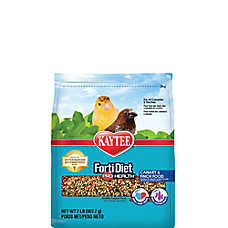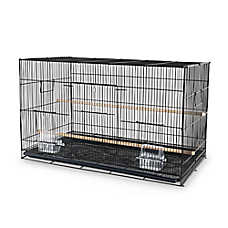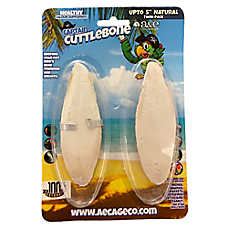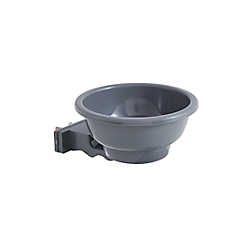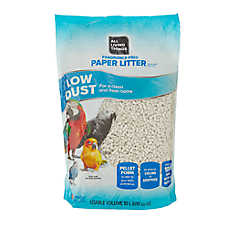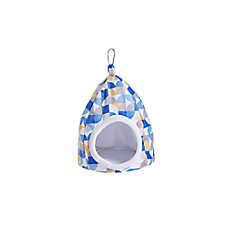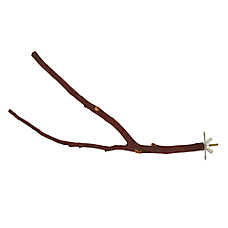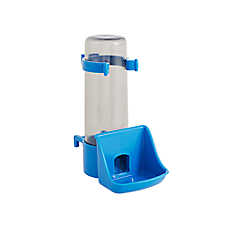Canary Care Guide
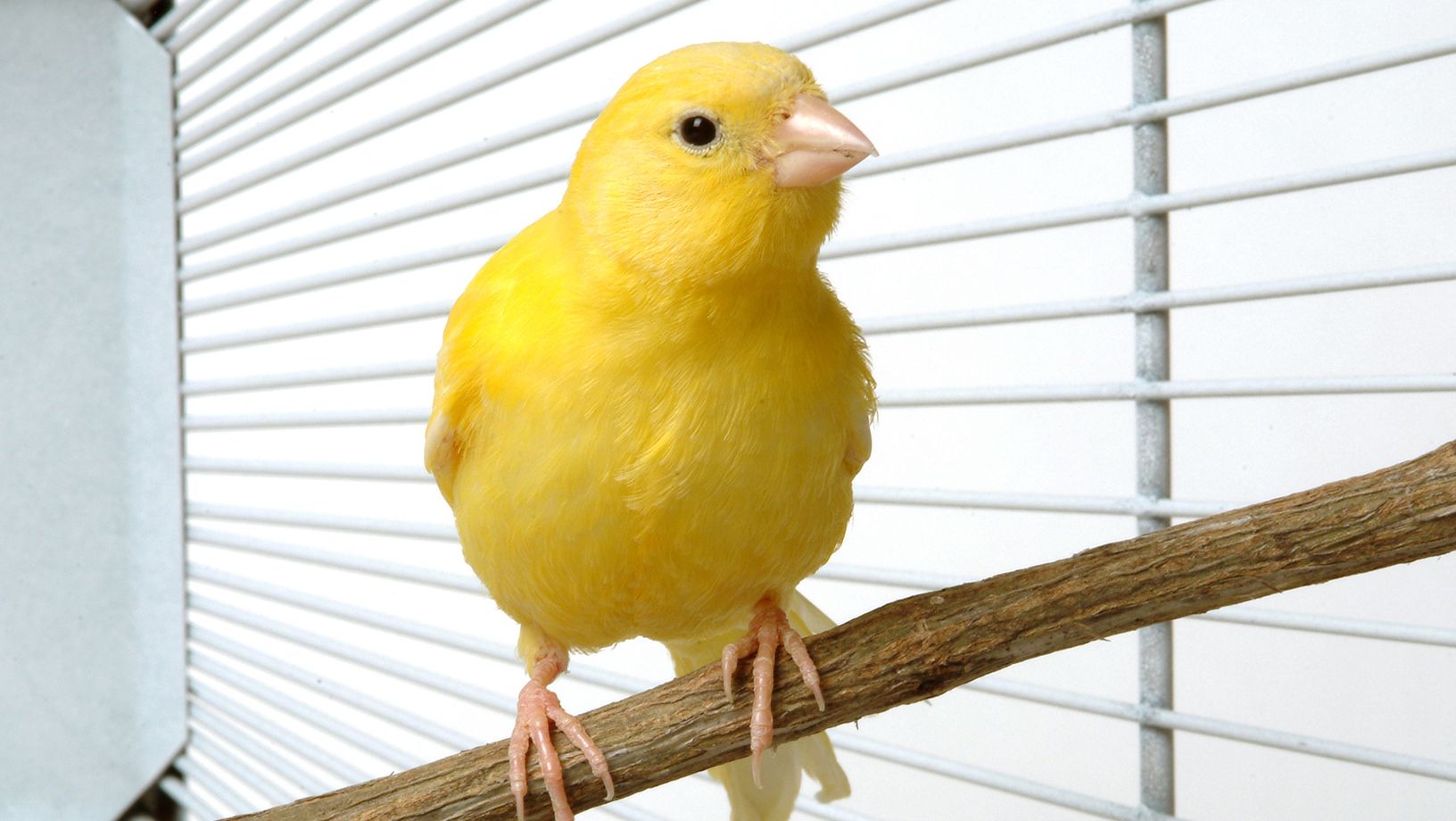
In this Article
Classy and Colorful Canaries!
Canaries are small songbirds native to the Canary islands, a volcanic archipelago off the northern coast of Africa. While their ancestors were typically grey or a light green, modern day domestic canaries come in a variety of different shades of white, green, orange, red and the classic “canary yellow.” That’s right, the color was named after the bird! Male canaries are known for their loud, melodical singing, whereas females typically chirp instead of singing.
Canary species profile
Experience level: Beginner
Size: Canaries grow up to 5" (13 cm) from head to end of tail.
Lifespan: Finches live for approximately 15yrs
Temperament: Canaries like to watch their pet parents and be talked and whistled to, but they prefer not to be handled and can be shy with people. With patience, love, and training these intelligent birds can learn to trust their people and become more amenable to being held.
Behavior: Canaries can be shy with people, but they are also very curious and playful. While they’d prefer to watch you from their cage, that doesn’t mean they aren’t interested in what you’re doing! Canaries will happily sing for you and enjoy being talked to and interacting in a less-physical way. While canaries can live with other birds, they do just fine alone and don’t always enjoy having cage mates
Setting up your Canary habitat!
Canaries need a spacious, low-stress environment where they can fly, explore, and observe you from a safe distance.
Enclosure size and placement
- Minimum size: 12" x 12" x 15"
- Recommended size: 18" x 18" x 24" or larger if space allows
- Canaries need room to fly, so bigger is always better, especially if housing multiple birds
- Place the enclosure at or below eye level, away from:
- Kitchens and cooking fumes (especially non-stick cookware)
- Strong odors and smoke
- Drafts, windows, and direct sunlight
- Cover the cage at night to help your bird feel safe and secure
Enrichment and accessories
- Include at least two perches of varying thickness and height to support foot health
- Avoid placing perches directly above food or water bowls to prevent contamination
- Natural wooden branches can provide additional perching and resting.
- Tie millet spray to branches or bars of the cage to encourage foraging
- Include toys, puzzles, and chewable items to support mental health
- Add a hay ball and Timothy hay to promote foraging and nesting
- Place a cuttlebone in the enclosure to support beak and bone health
- Use a liner at the bottom of the habitat and replace as needed to maintain cleanliness. Cage should be spot cleaned daily, and fully cleaned weekly.
- Add a wicker nest and nesting materials for comfort and enrichment
Bathing and water
- Offer a birdbath or shallow dish for splashing and bathing 2-3 times a week.
- Alternatively, if your bird prefers showers to baths, gently mist your canary with warm water 2–3 times a week
- Provide clean, fresh water for drinking at all times in a bowl or bird water bottle
Canary Care and Feeding
Pellet-seed blend: This is your bird’s primary source of food and nutrition. Remove old food and refill with fresh food daily. Keep the bowl about ¾ full so your bird can eat when they’re hungry
Fresh veggies and fruit: Offer your bird leafy green vegetables, fruits and grains every other day to help provide a well-rounded and interesting diet to keep your bird healthy.
Treats: Honey sticks and millet spray may be offered as treats. Offer treats once or twice a month in limited quantity to help prevent obesity
Water: Provide clean, fresh water for your bird at all times either in a water bowl or via a bird water bottle.
Never feed your bird chocolate, sugar, fried foods, avocado, or human junk food. These foods can make your bird very sick.
[When to see a vet]
In addition to regularly scheduled appointments, contact your avian veterinarian if you notice the following signs:
- long periods sitting at the bottom of the enclosure
- decreased appetite or weight loss
- less activity and grooming
- feathers fluffed for long periods of time
- sneezing; discharge from eyes, nose or mouth
- runny droppings for more than two days
- constantly plucking feathers or feathers are falling out
- beak over gown/ not closing normally
Go to “find a vet” on AAV.org for help finding an avian veterinarian in your area.
SHOPPING CHECKLIST
- *Minimum habitat sized 12 x 12 x 15"
- Recommended 18x18x24” or larger if you have room
- fortified canary pellet-seed diet
- food bowls
- water bottle and/or bowl
- at least two perches (each a different thickness and height) and a ladder
- toys
- habitat liner
- habitat cover (for nighttime)
- birdbath or spray bottle (for bathing)
- wicker nest and nesting materials
- hay ball and Timothy hay (for foraging and nesting)
- millet spray and other treats
- cuttlebone
*It is advisable to purchase the largest size cage that you can afford and that will fit in your household.
Ready to learn more?
This guide is a great starting place, but we encourage you to do more research on the individual species that you are keeping so that you can be as successful as possible!
FAQs
Do canaries need a companion bird?
Not necessarily. Canaries are often happiest living alone and may become territorial with cage mates. If you want more than one, make sure they have plenty of space and monitor for signs of stress.
Not necessarily. Canaries are often happiest living alone and may become territorial with cage mates. If you want more than one, make sure they have plenty of space and monitor for signs of stress.
Why isn’t my canary singing?
Only male canaries sing, and even then, not all the time. Changes in singing can be due to molting, stress, illness or changes in lighting. If singing stops suddenly and doesn’t return, consult a vet.
Only male canaries sing, and even then, not all the time. Changes in singing can be due to molting, stress, illness or changes in lighting. If singing stops suddenly and doesn’t return, consult a vet.
Can I let my canary fly outside the cage?
Yes, but only under close supervision and in a safe, enclosed space. Make sure windows and doors are closed and there are no ceiling fans or hazards in the room.
Yes, but only under close supervision and in a safe, enclosed space. Make sure windows and doors are closed and there are no ceiling fans or hazards in the room.
How often should I clean my canary’s enclosure?
Replace liners as needed and clean food and water dishes daily. Do a full habitat cleaning at least once a week, including perches and toys.
Replace liners as needed and clean food and water dishes daily. Do a full habitat cleaning at least once a week, including perches and toys.
Do canaries bathe?
Yes! Many enjoy birdbaths or gentle misting. Bathing keeps feathers clean and helps with molting.
Yes! Many enjoy birdbaths or gentle misting. Bathing keeps feathers clean and helps with molting.
